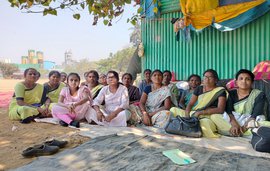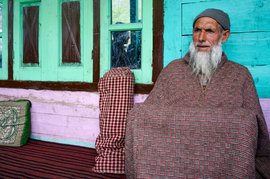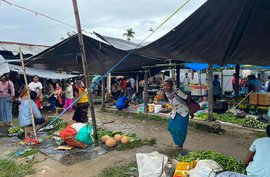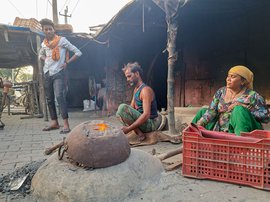It is impossible to find mistakes in Jolen Sanga’s work.
Identifying where the patterns on her handwoven chatais (mats) begin and end is a difficult task – all four sides of the chatai look alike. A single mistake while weaving might lay waste to a month of hard work. So the 66-year-old makes no mistakes. Her hands are now used to the work, and she can even weave while talking to people.
Jolen and her late husband Yakub had two sons and four daughters. Her eldest son moved away in 2001. Then, in a series of misfortunes, Yakub, her daughters Rahil and Nilmani, and her son Silas passed away between 2004 and 2010.
“My heart broke from all the deaths in my family. I didn’t know what to do,” says Jolen. “There was no way to run the household, so I started making mats.”
Chalangi village in Jharkhand has a population of 1,221 people (Census 2011) and Jolen is the only chatai weaver in her village. She has woven more than 25 mats since she started as a young girl. “This work [weaving] might look difficult but it is quite easy to learn,” she says. She picked it up by observing women in the neighbourhood. “I had the skills since childhood, but I only started using them because of a shortage of money.”
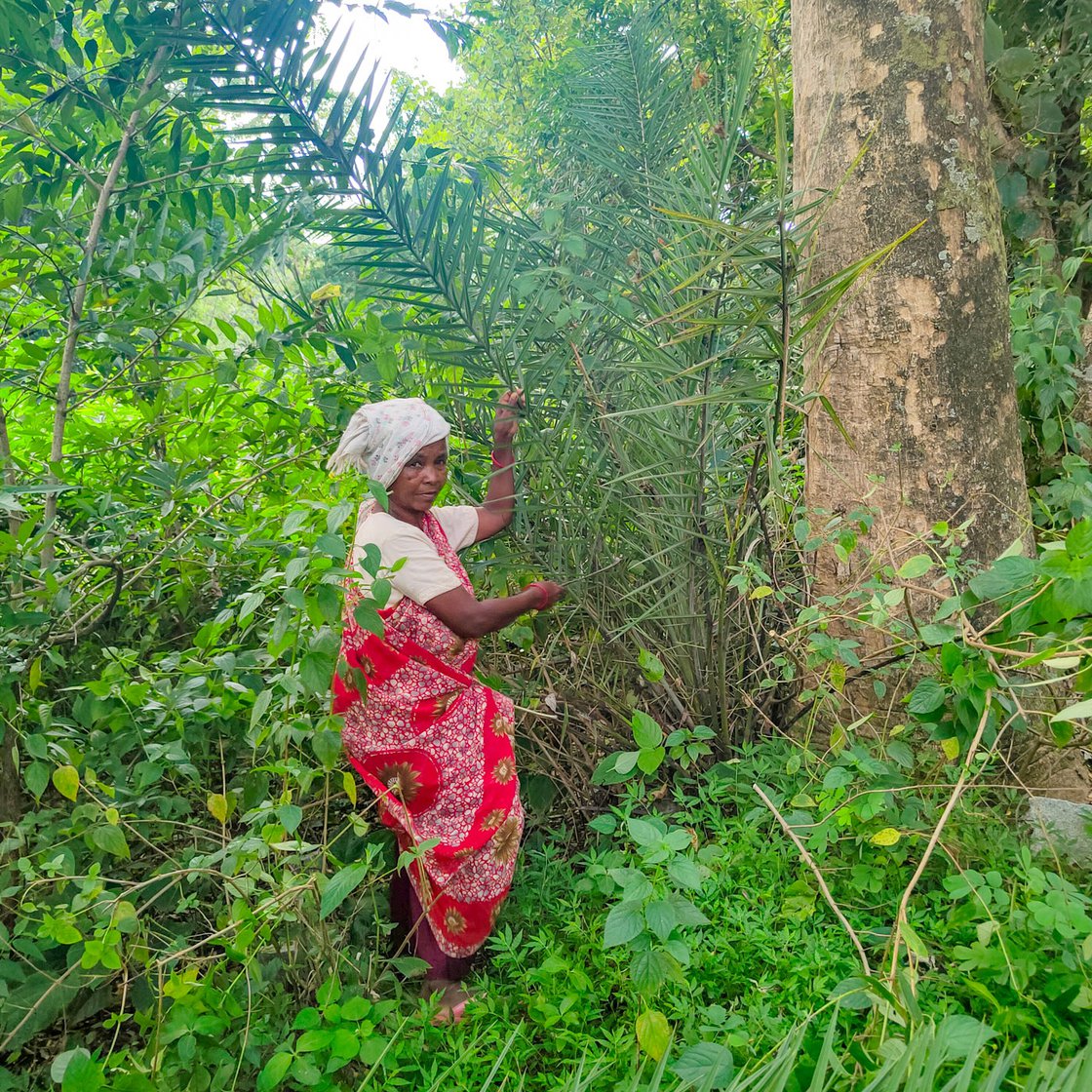
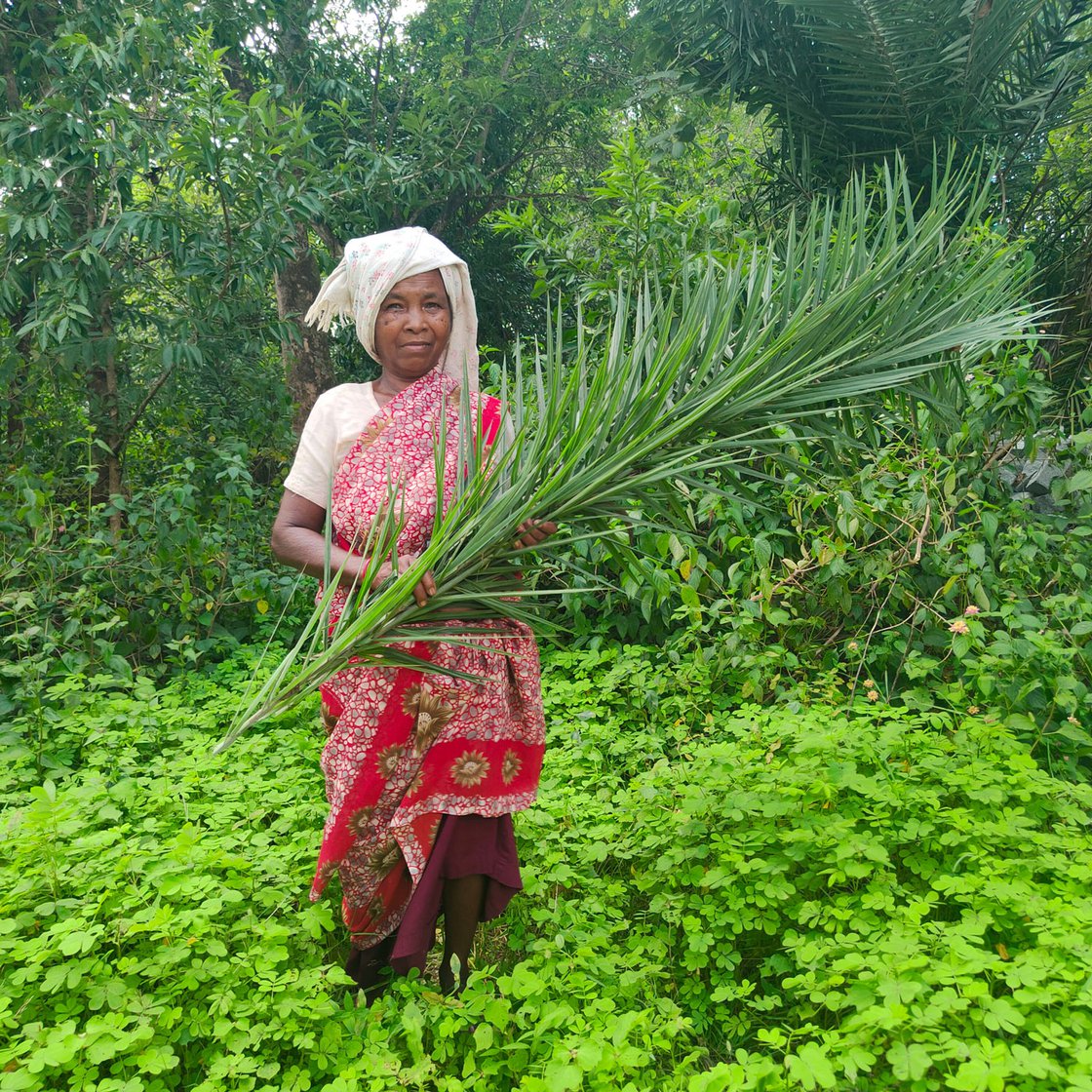
Jolen's chatais are made from the leaves of the date palm. She prefers to collect them herself from the forest, rather than buy from the market
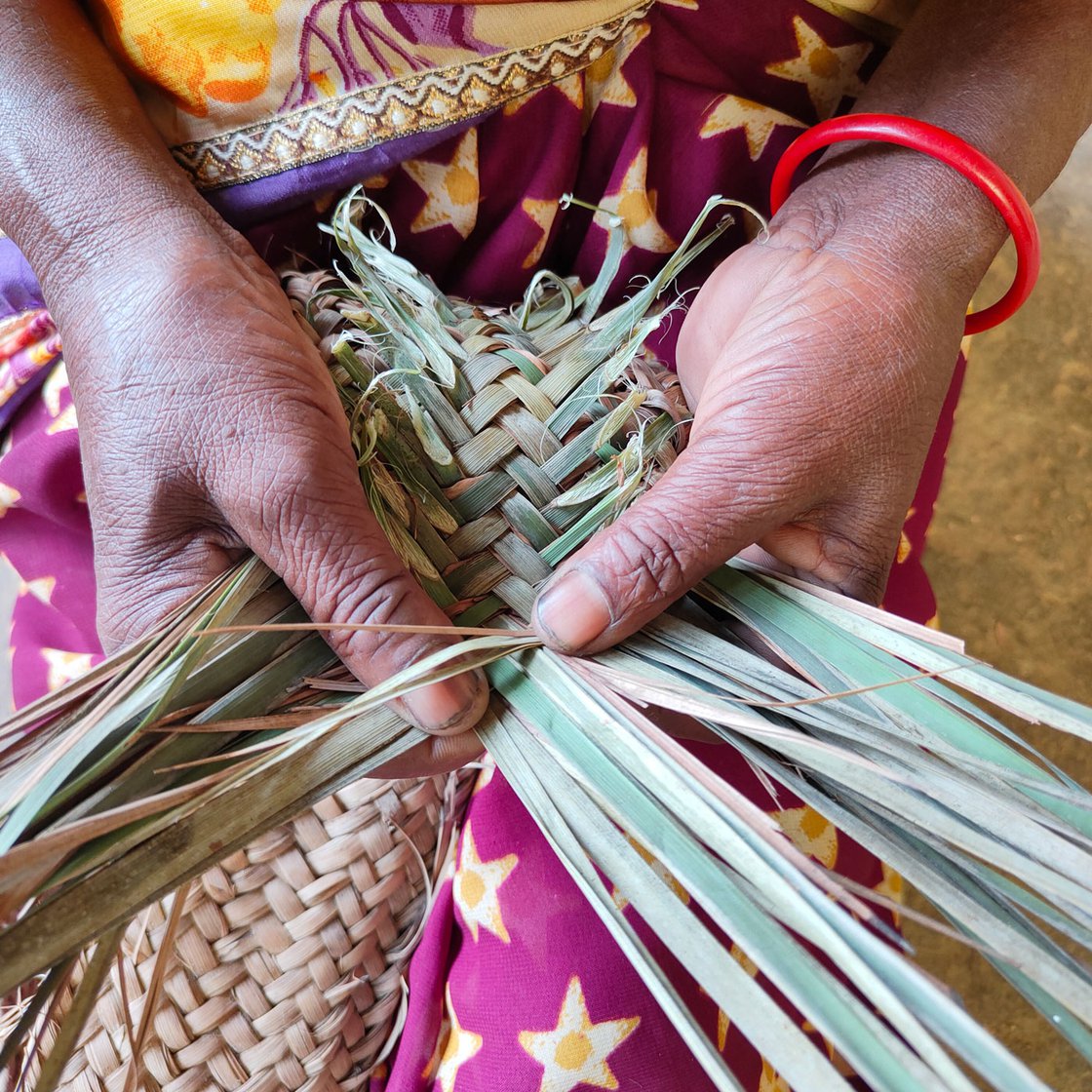
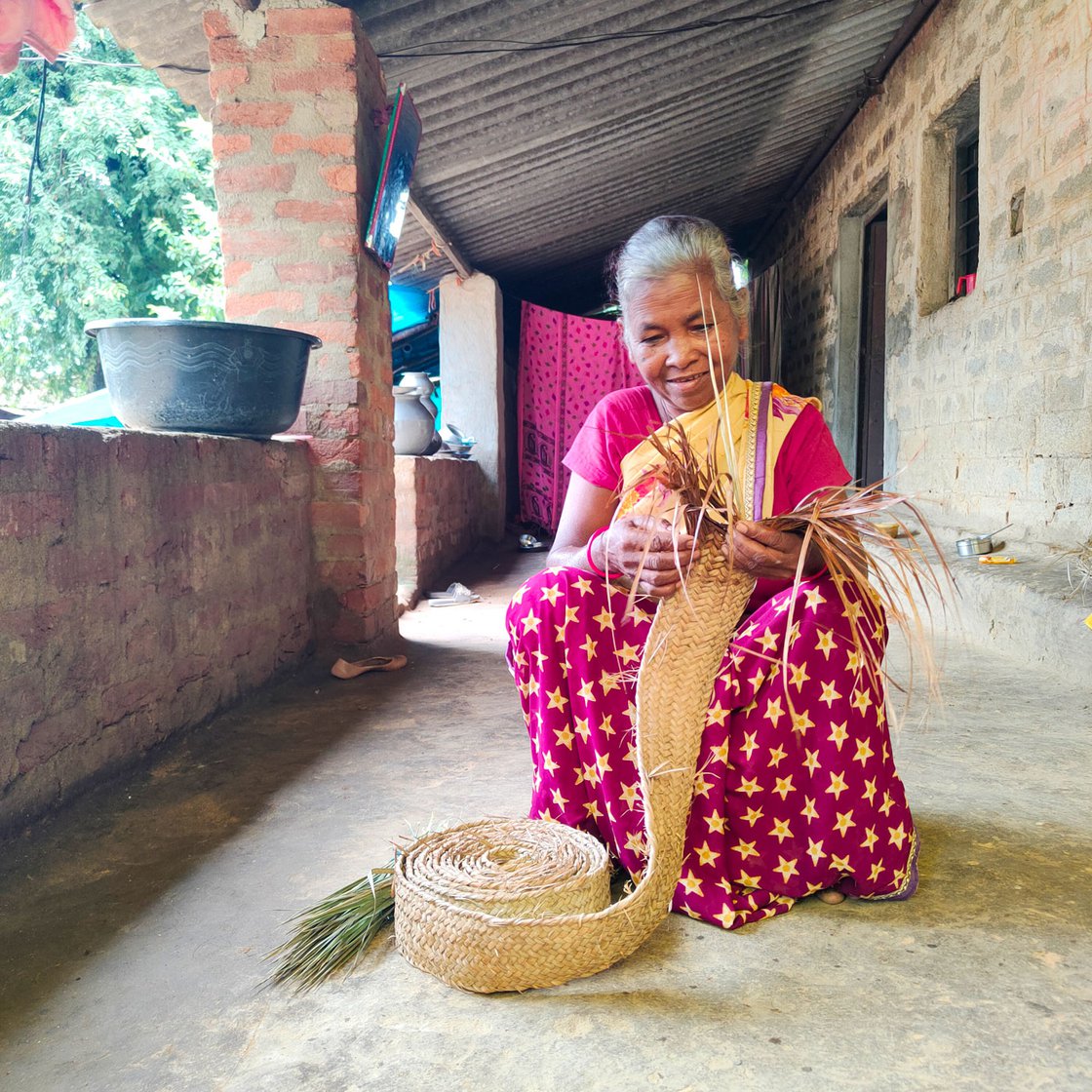
The leaves are separated from the stem and woven into strips. Jolen then carefully braids them into a complex repetitive pattern
She studied till Class 7. “In my time education was not given much importance. Going to school was considered a waste of time.” Her monthly earnings come from selling woven mats, farming and working as a daily wage labourer.
“Working in the fields is easier than weaving chatais ,” she says. She adds that while agricultural labour happens only in the monsoon and daily wage work goes on from 10 a.m. to 5 p.m., weaving a single chatai can take anywhere from 40 to 60 days depending on its size. Jolen says the continuous work in one position brings on a backache bad enough to bring tears to her eyes.
Jolen and her two daughters – Elisaba, 36 and Binita, 24 – are members of the Munda community, listed as Scheduled Tribe. They live in Jharkhand’s Khunti district.*****
The process of weaving a chatai begins with collecting and drying date palm fronds in the sun. The leaves can be bought in the market but Jolen finds them too expensive; she prefers collecting them herself. She selects the fronds according to the size of the mat she plans to weave. The leaves of the fronds, separated from the stems, are then soaked in water. After this they are ready for weaving.
Jolen begins by weaving a long strip about as wide as the palm of her hand. The slender leaves are braided under and over each other into a complex repeating pattern. She is careful in avoiding mistakes and keeps the weave tight – a loose weave ruins the pattern of the mat.
Once the strip is ready, she measures and cuts it depending on the length of the mat to be woven. The cut pieces are laid side by side, waiting to be stitched together. For this, Jolen uses a thick needle that costs her Rs. 10, and a spool of plastic thread worth Rs. 40, both bought from a chowk [market] two kilometres from her village. “Earlier, I used to buy the same string for ten and the needle for five rupees,” she complains.
Stitching is easier and quicker than weaving. If done continuously, an entire mat can be stitched in two days. A newly woven chatai weighs more than five kilos. Its weight reduces upon use.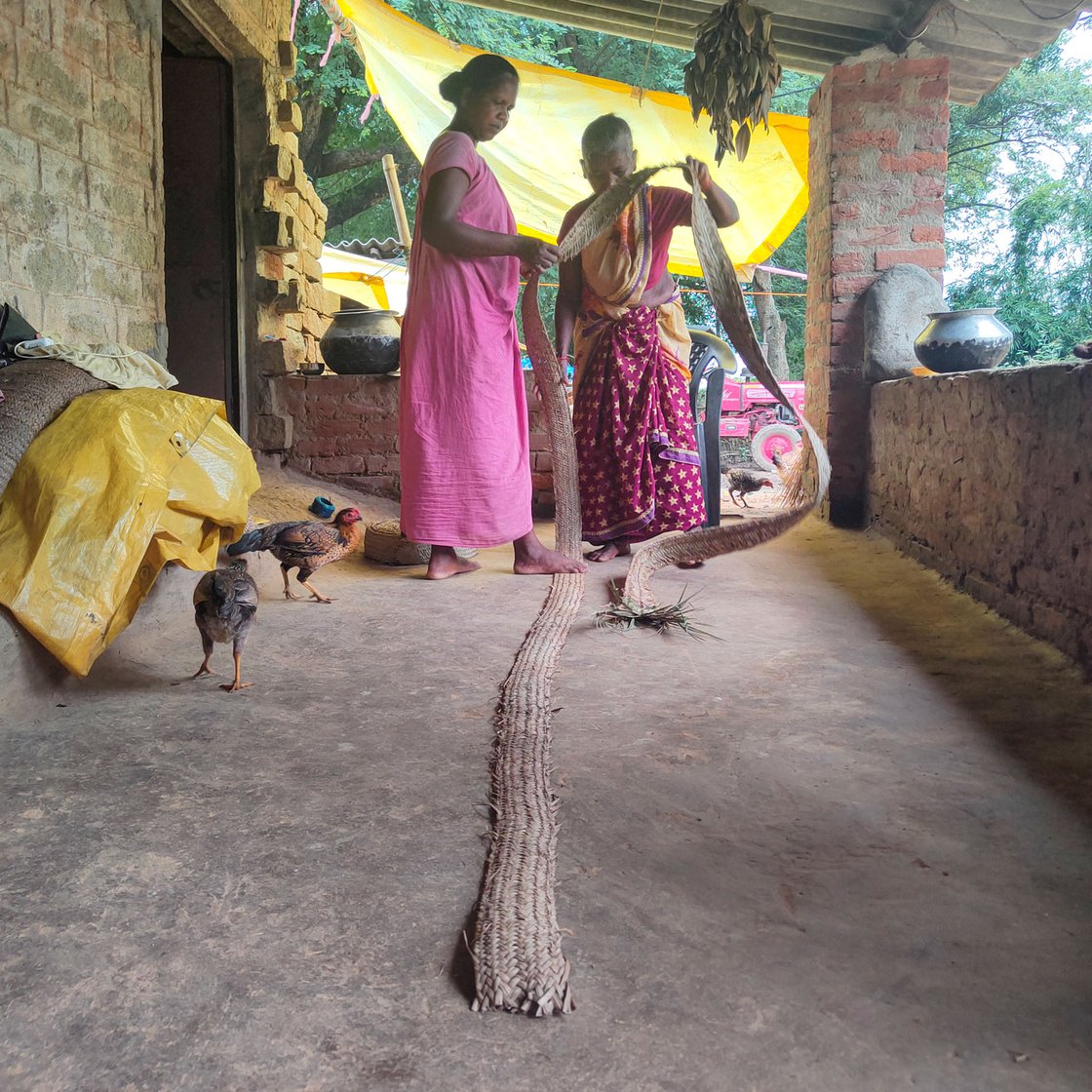
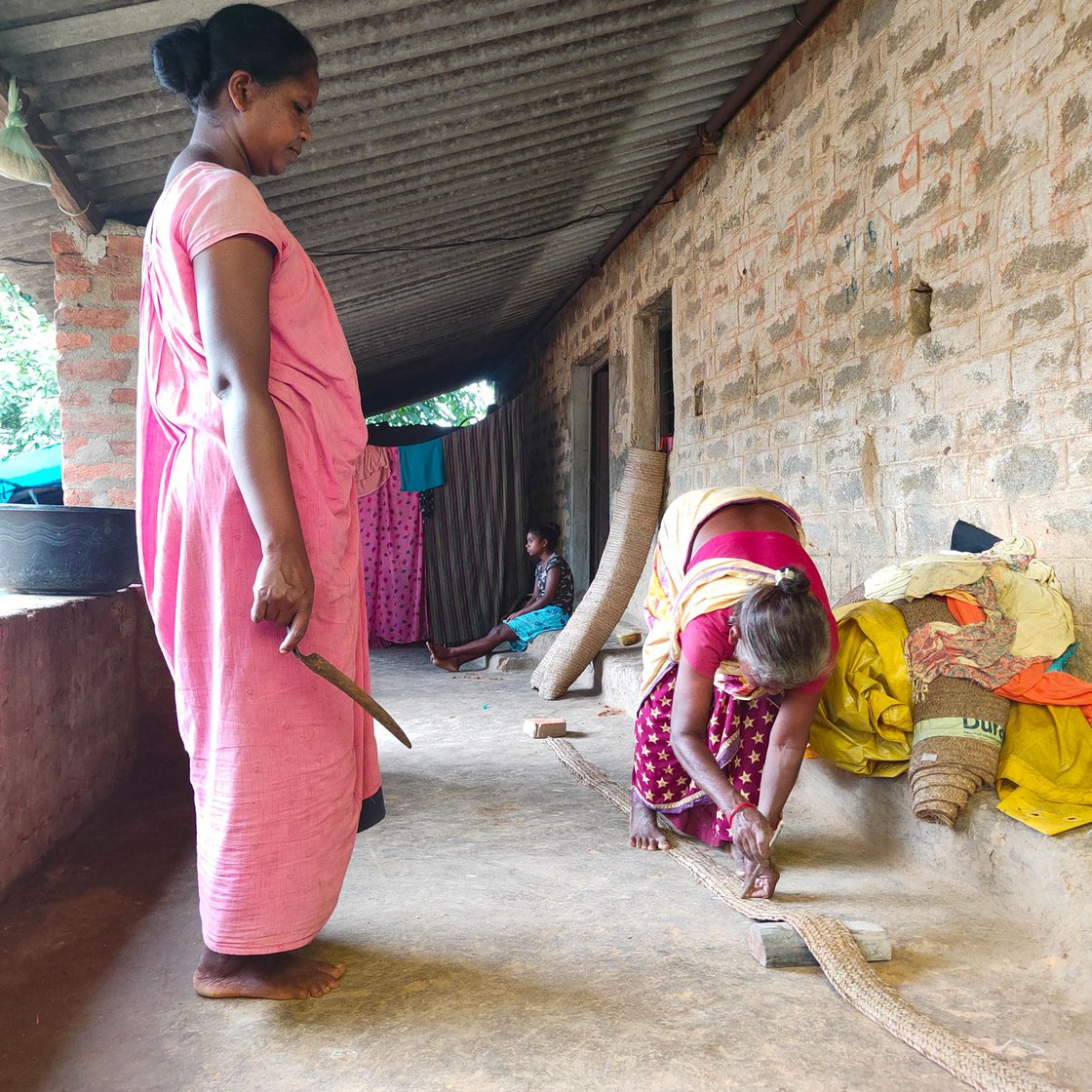
Elisaba (standing on the left) and Jolen measure the strips into equal lengths before they are cut. A wooden stick (right) comes in handy to ensure correct measurements
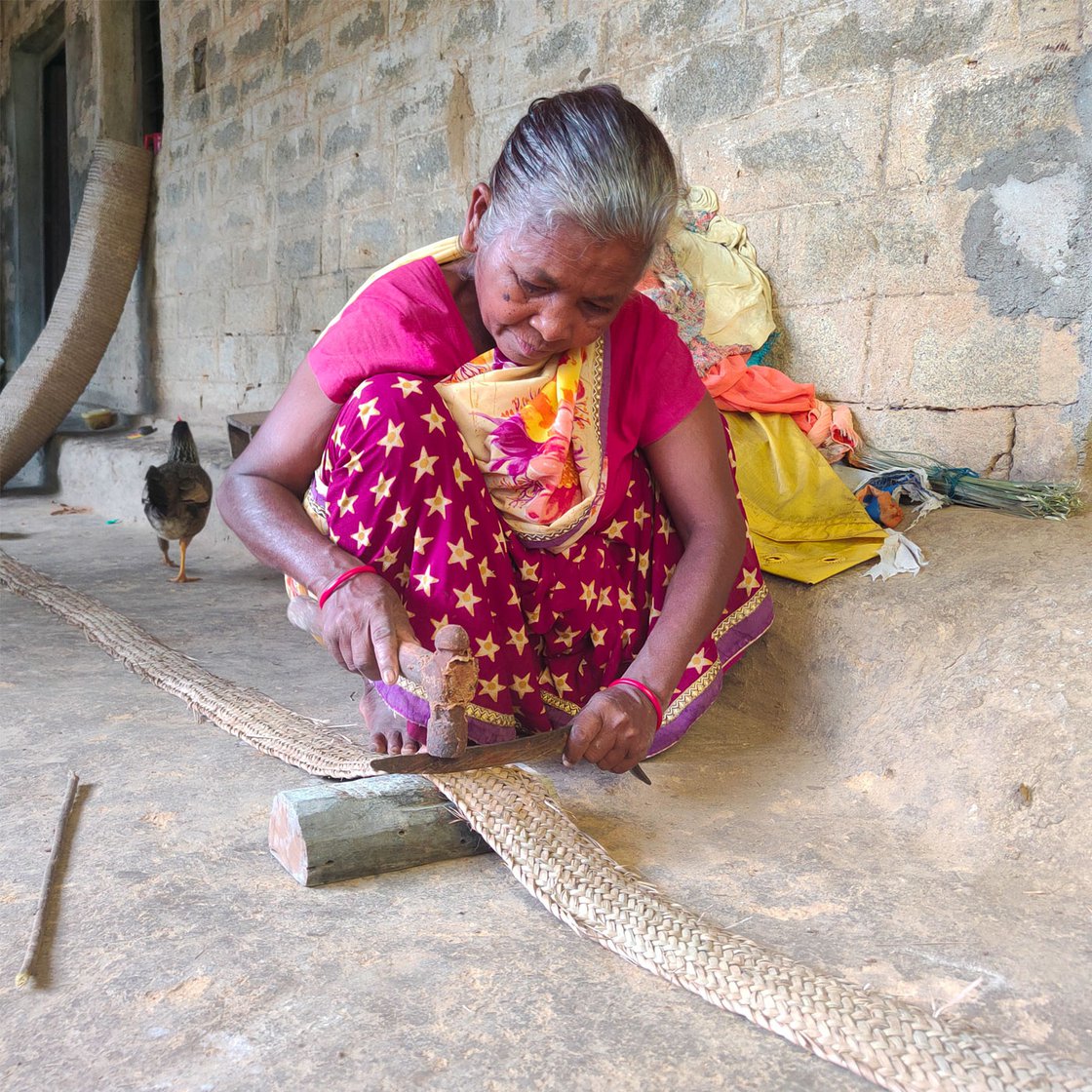
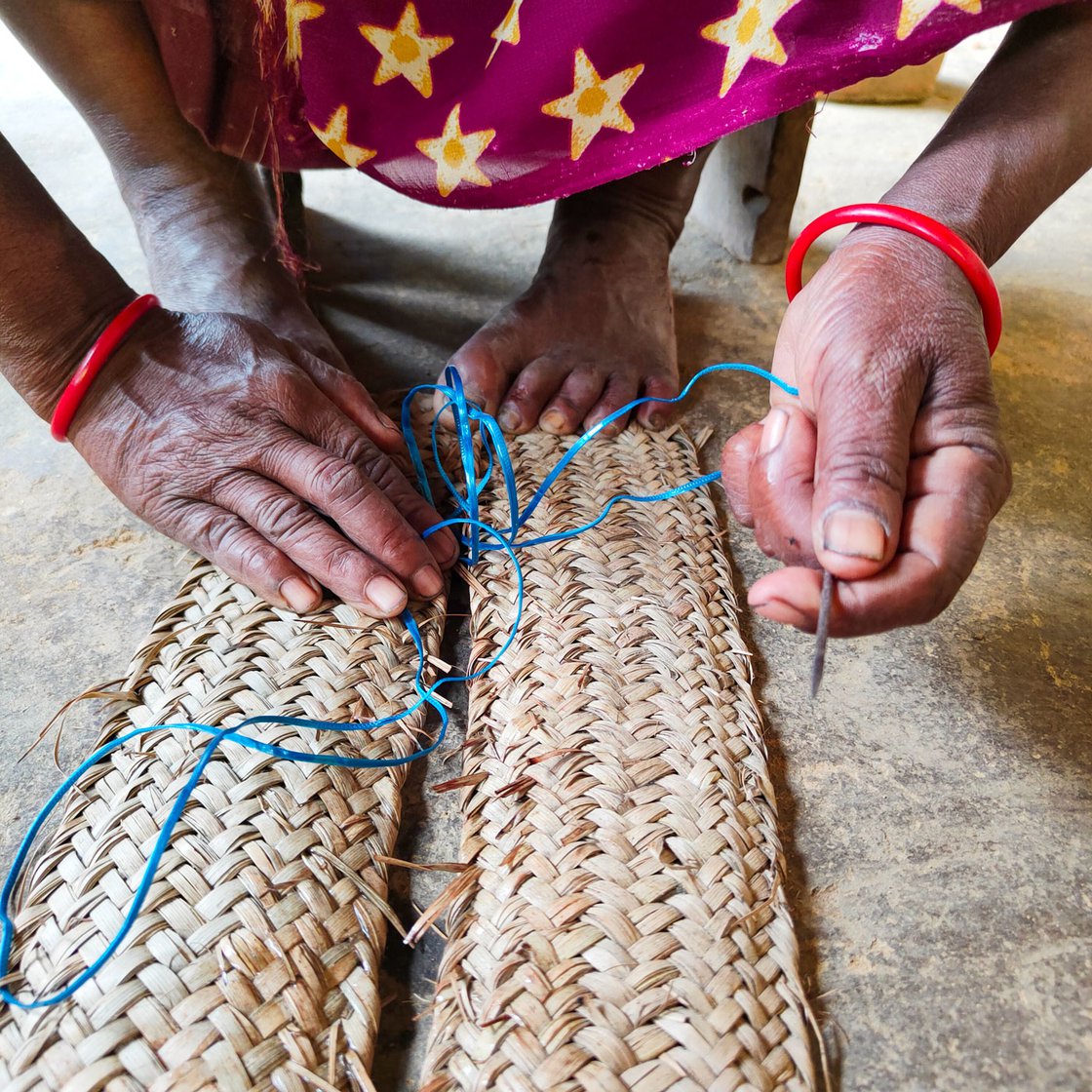
A long knife, a block of wood and a hammer help Jolen in achieving a clean cut. She uses a thick needle and plastic thread to stitch (right) the woven strips together
To be used in any season, the thickness of this date palm mat makes it better than its plastic counterparts, especially during the winter months. A chatai like this might last more than five years – longer if kept away from water.
“I have been using this chatai for the last seven years and I will use it for some more. It hasn’t torn anywhere,” says Jolen, pointing to an old mat in her house. “I keep it away from water and look after it like a child.”
*****
“My mother loves making chatais . Whenever she is free, she starts weaving,” says Elisaba, Jolen’s elder daughter. Elisaba has not learnt weaving from her mother, but she helps her in preparing the palm fronds, cutting the woven strips and stitching the mat.
Jolen’s younger daughter Binita has polio and is unable to walk on her own. “We don’t have enough money to afford a good hospital. She is being treated in a government hospital. We get medicines every month and have massages done.”

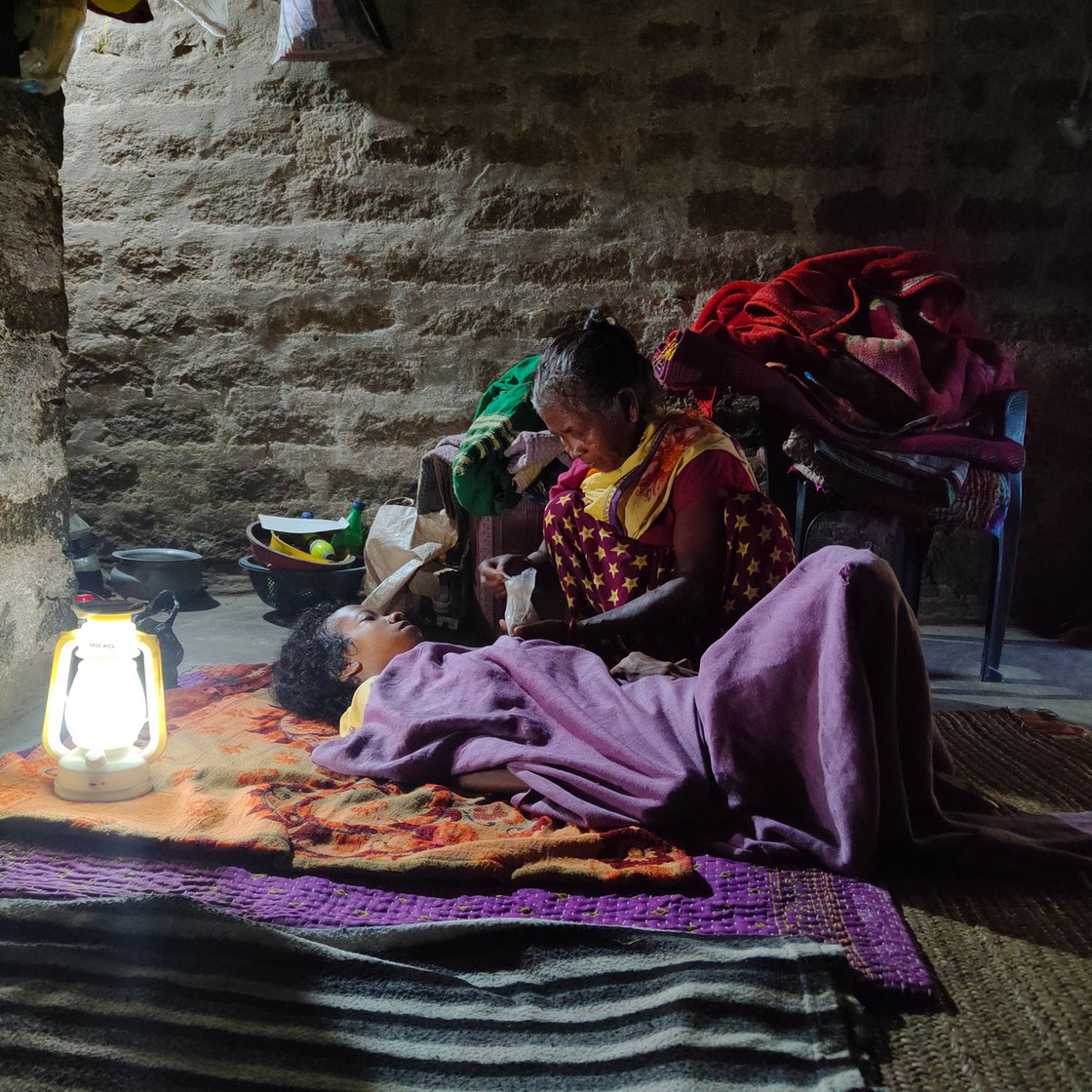
Left: Jolen and Elisaba (seated) in the verandah of their house. Elisaba helps her mother in different stages of the chatai making process. Right: Jolen's younger daughter Binita has polio and needs care
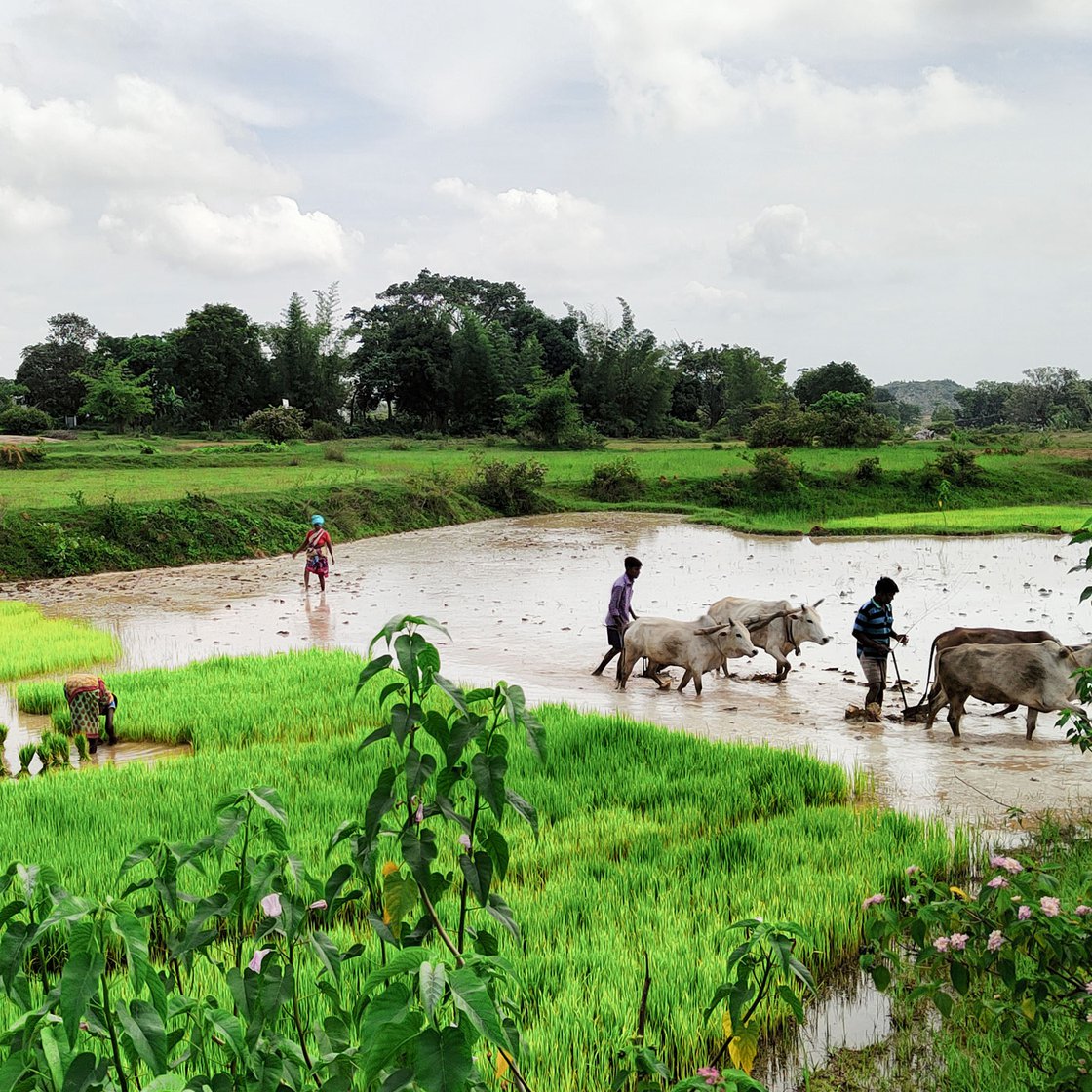
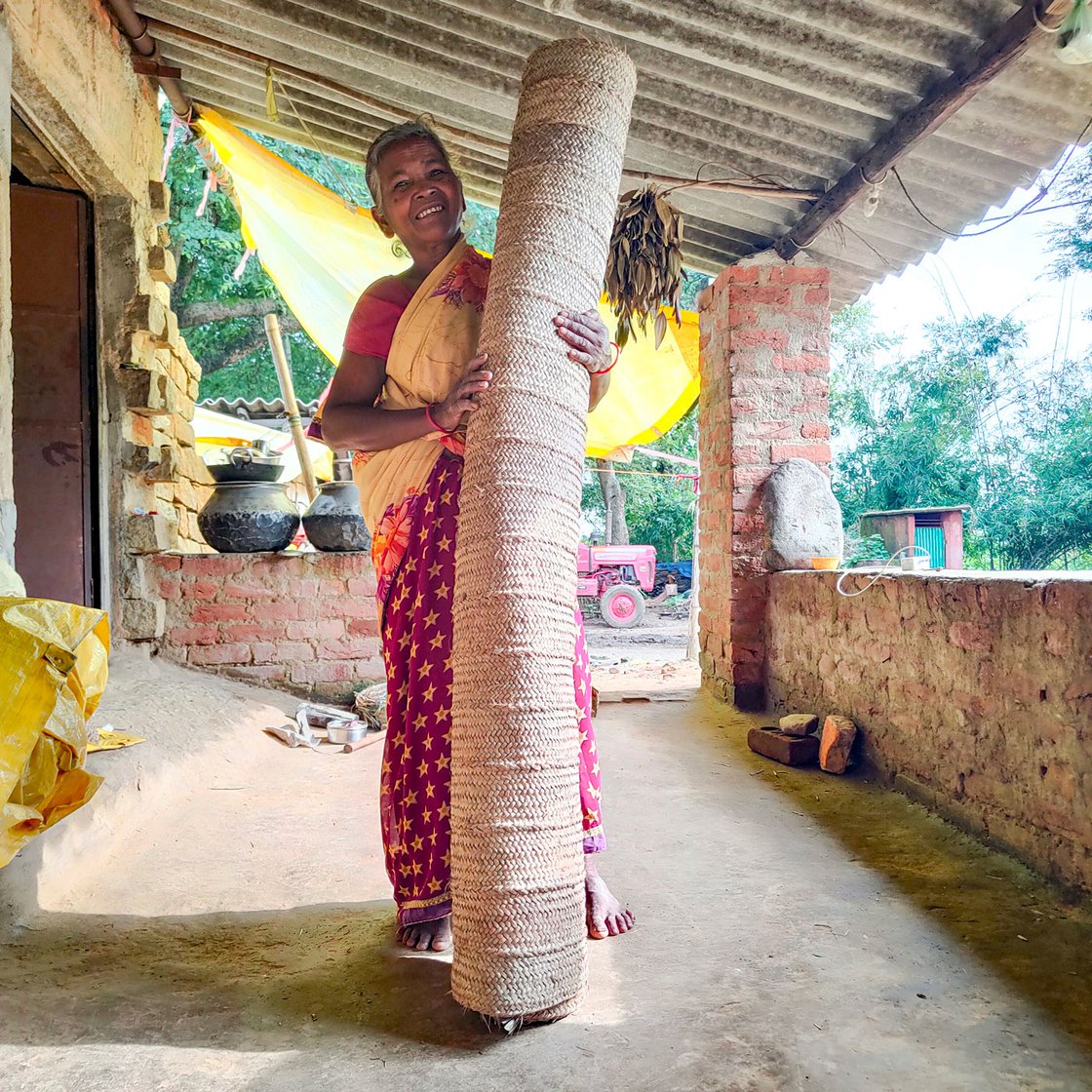
Left: Working in the fields is easier than weaving chatais,' says Jolen who also works as an agricultural labourer. Right: Weaving a single chatai can take up to 40 to 60 days
Daily wage agricultural labour brought in just Rs. 100 for eight hours of work. Now that she owns a piece of land, she grows her own food. Jolen also receives Rs. 1,000 per month under the Indira Gandhi National Widow Pension Scheme. Her daughter Binita also gets Rs. 1,000 each month under the Swami Vivekananda Nishakt Swawalamban Protsahan Yojana.
*****
“I used to weave under the shade of a tree,” says Jolen, sitting on the verandah of her house. The verandah, which she built with her own money, is now her chosen place of work and an occasional gathering place for her neighbours.
She says that some twenty years ago, people from the village would gather during the summer (February to June) and weave together. This would also give women a chance to talk and share their joys and sorrows. Chatais made from date palm leaves would sell for Rs. 600-650 then.
Today, the mats Jolen weaves are priced between Rs. 1,200 to Rs. 2,500 depending on their size. These are low returns considering the time and the physical effort that goes into making them. However, people these days prefer buying plastic chatais – they are cheaper (priced from Rs. 100), lighter and colourful.
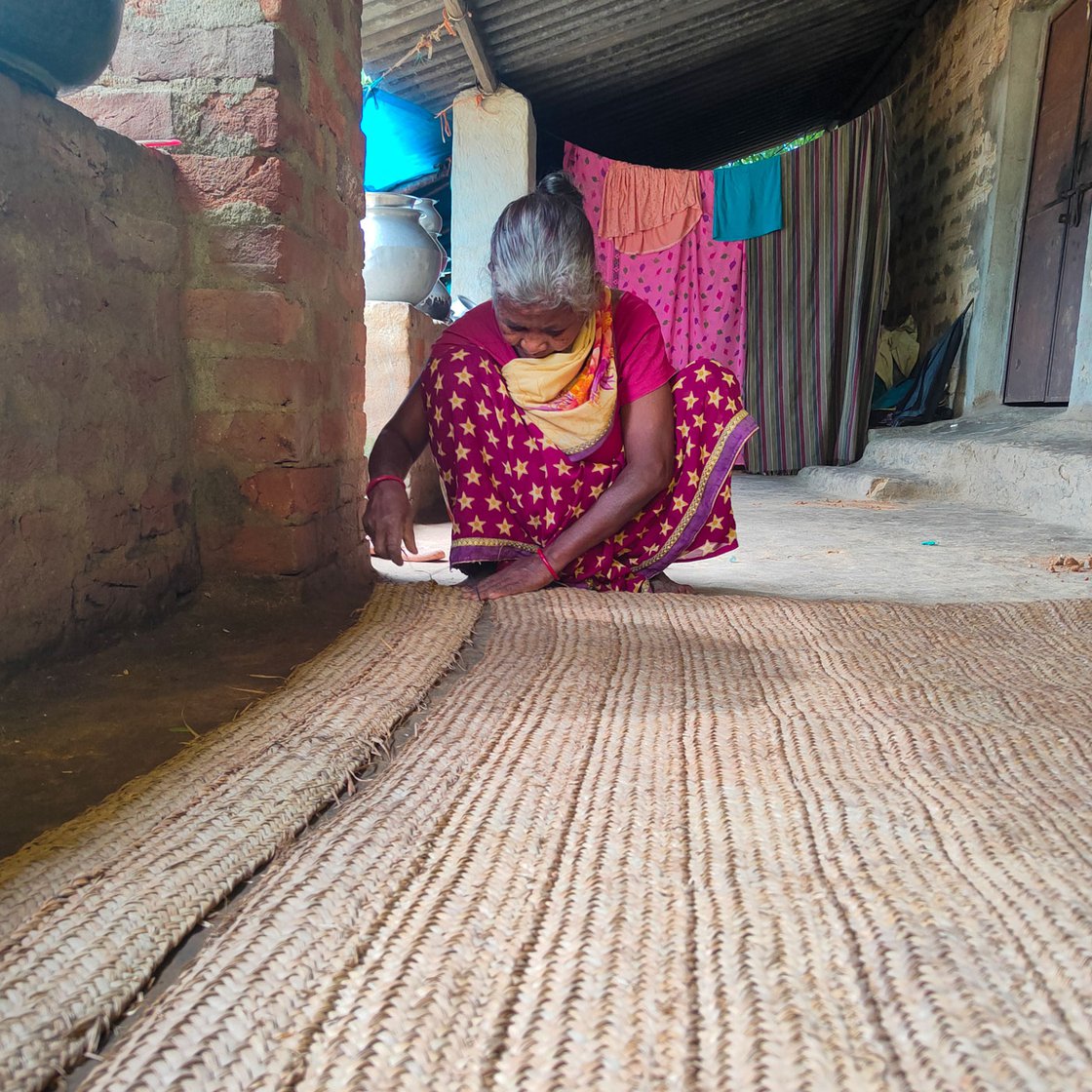
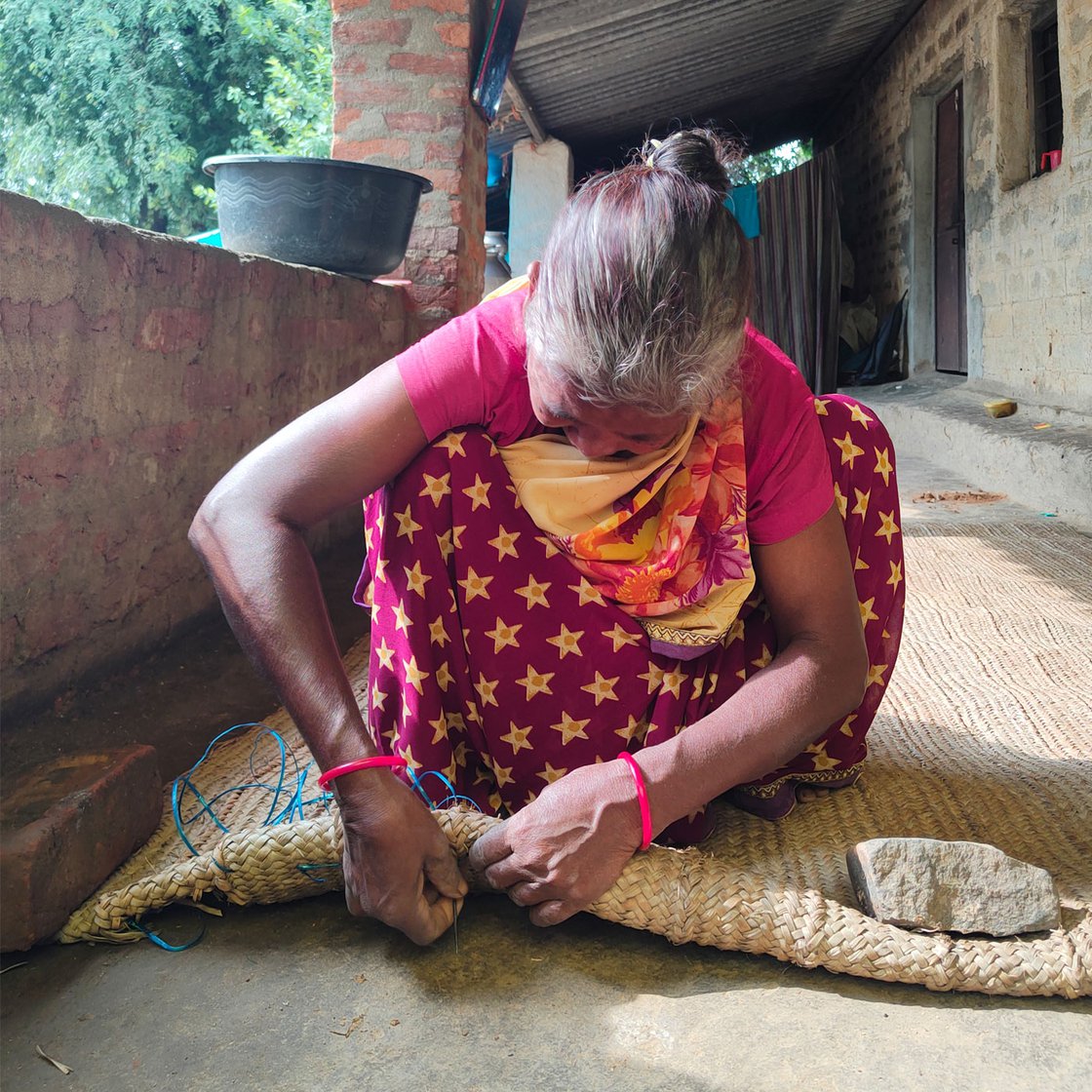
The date-palm mats are priced around Rs. 1,200 to Rs. 2,500 depending on their size
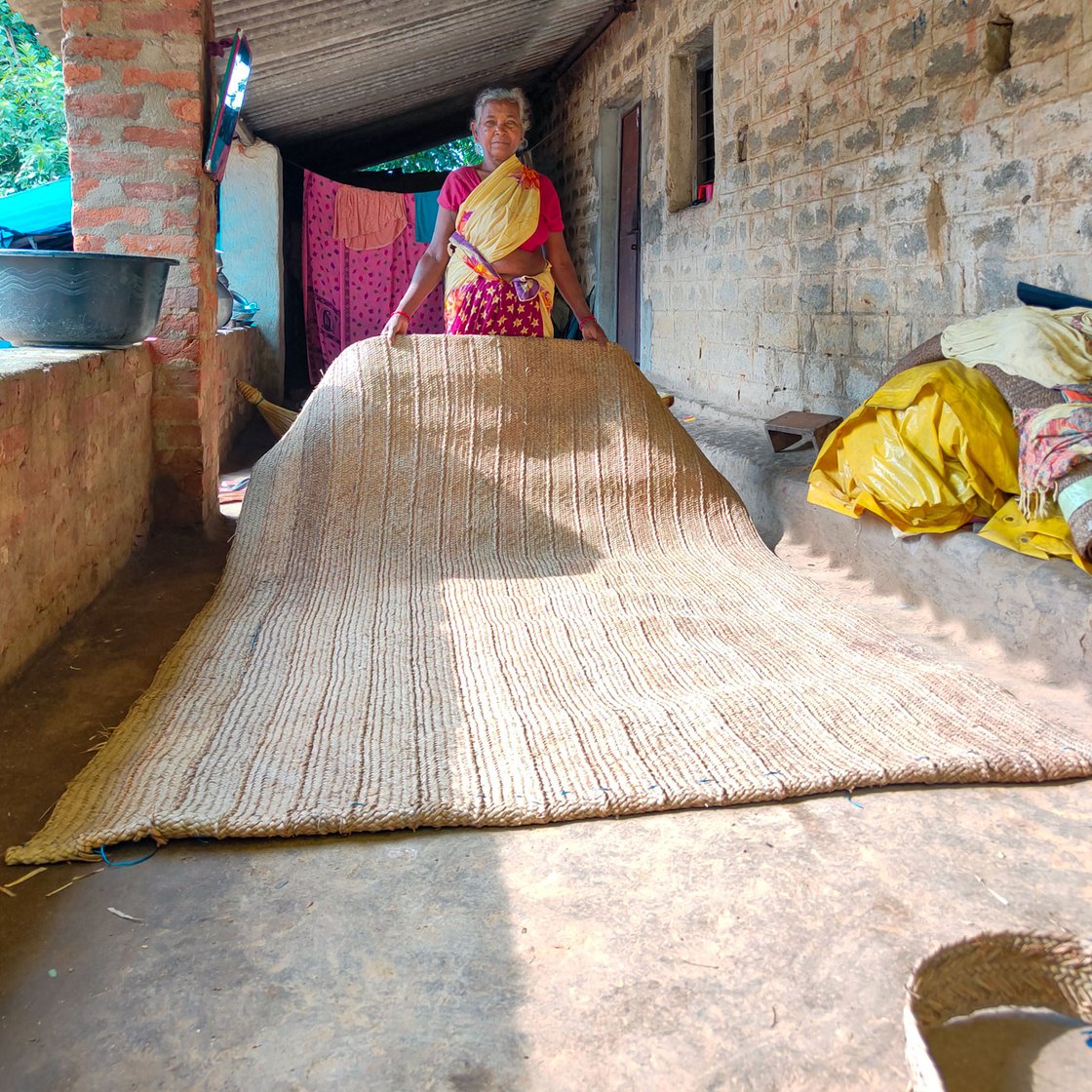
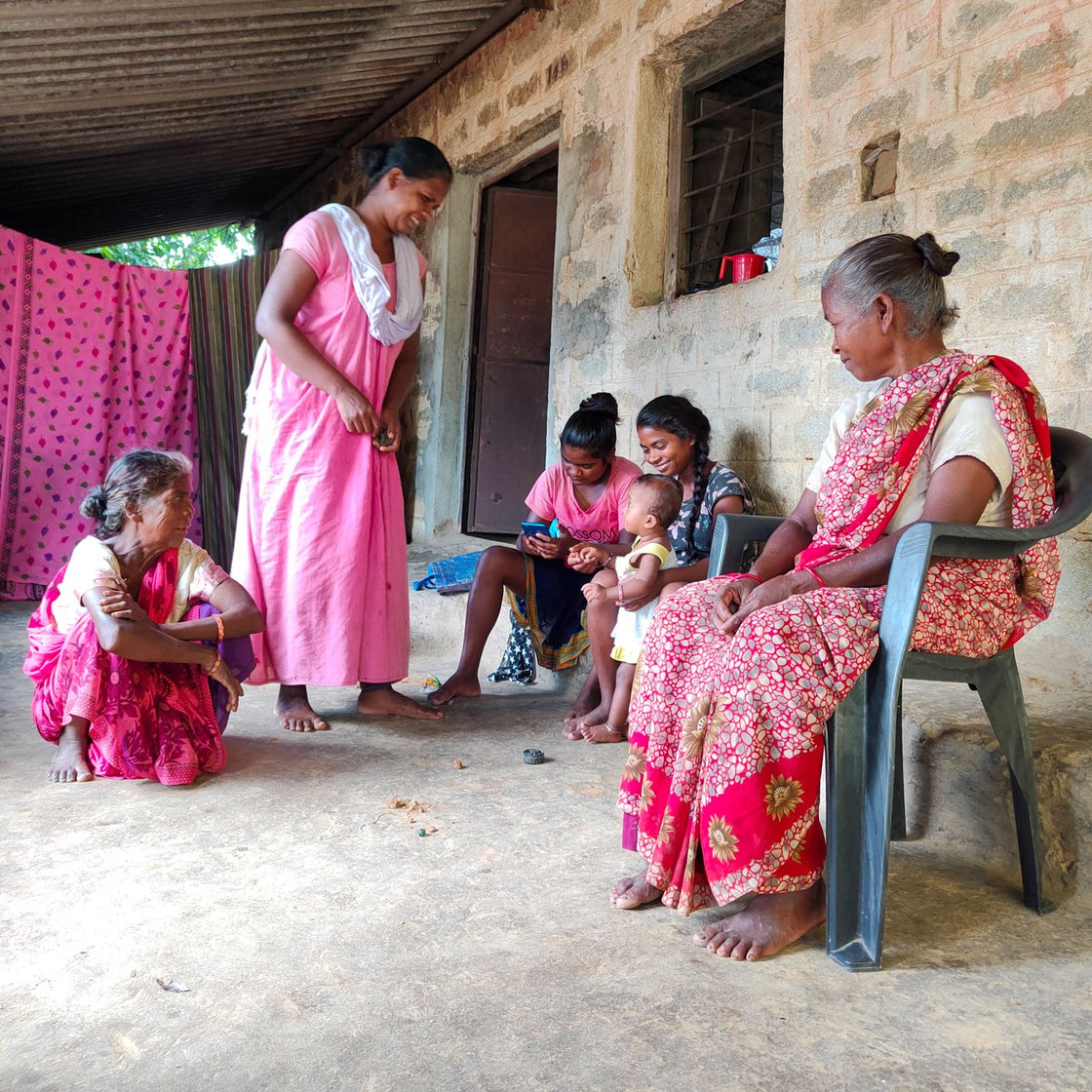
The verandah of Jolen's house, built with her savings, is used to make
chatais
and is also a gathering place for neighbours
Jolen says, earlier one could find a woven mat in every house in the village but now you can see them only in the houses of the Adivasi communities. This is because of a tradition in which a woman getting married is presented with a newly woven
chatai
to carry to her new house.
The woven mat is slowly disappearing, adds Jolen and perhaps in a few years, chatai weavers will only be people of the past.
Our thanks to Parveen Kumar and Amrita Rajput, former PARI interns who helped with this piece, and Dhyanvi Katharani, former PARI intern who helped in the English translation.

